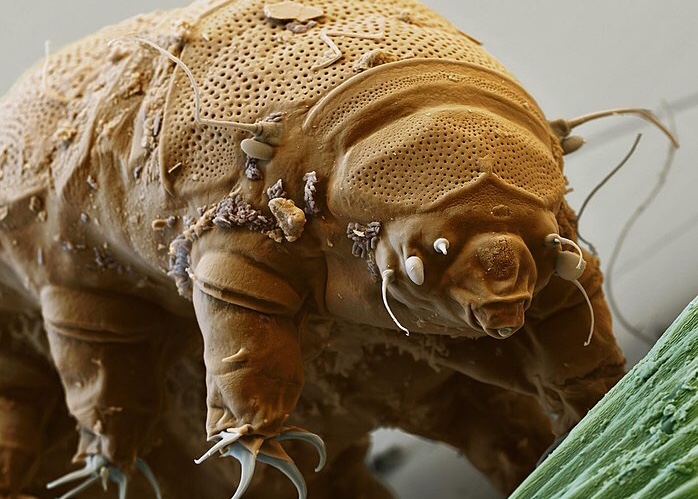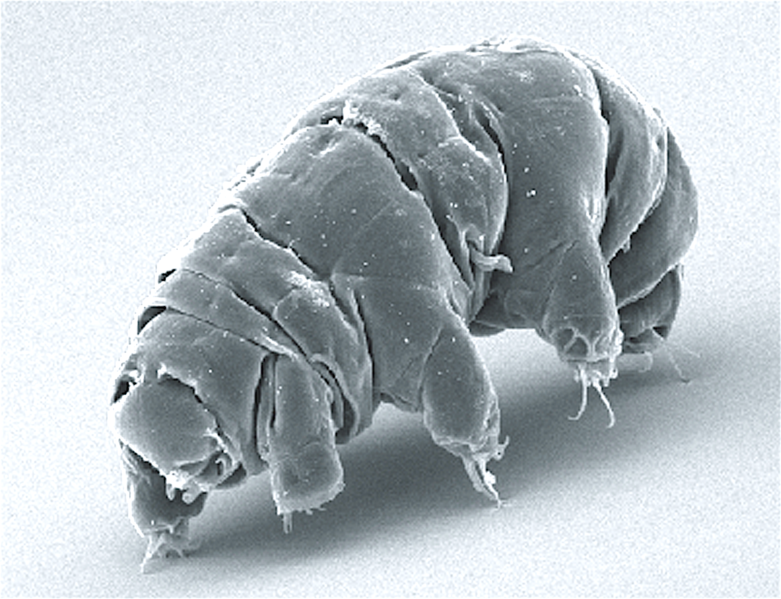
If you have never previously heard of the water bear, most likely you will read this with the impression that this is a science fiction article. However, I must correct that mistake immediately. Water Bears, also known by their scientific nomenclature Tardigrades, are some of Earth’s most fascinating creatures!
The Water Bears
Water bears (a.k.a Tardigrades) went largely undiscovered, and to this day, relatively unknown largely in part due to their incredibly small size. Ranging from 0.05 millimeters to 1.2 millimeters (0.002 to 0.05 inches) they come in as the smallest animals on earth. In fact you would require a low powered light microscope just to even see one!This would explain why it wasn’t until 1773 when they were first discovered by German pastor, Johann August Ephraim Goeze. He named them Tardigrada, which means “slow stepper”.
Visually, Water Bears resemble a plump bear with fat rolls that transverse the entirety of its body. Their head however is scrunched-up and they have eight appendages with four to eight claws on each.

One thing that immediately distinguish the water bear from any other animal on earth is the fact that, despite their size, they are surprisingly resilient. Water bears can survive virtually any environment. From mountain tops to the deep sea, from rain forests to the Antarctic, Tardigrades have also been shown to be able to survive the vacuum of space!
Tardigrades In Harsh Environments
What makes the Water Bear Earth’s mightiest creature is its ability ability to survive in a large variety of harsh environments. As mentioned above, the Water Bear can survive in the vacuum of space, temperatures as low as -200 °C (-328 °F) and as high as 151 °C (304 °F), extreme radiation, high pressure (6x the pressure of the deepest part of the ocean), low pressure, boiling alcohol, and more I have failed to mention.
The secret to their survivability lies is a process known as cryptobiosis, a metabolic state of being entered by an organism in response to extreme environmental conditions. In this state the Water Bear’s metabolic activity comes to a standstill until the animal regains a favorable environment, then the state is reversed.
Water Bears and Scientific Research
Because of all these amazing qualities, the water bear’s genome is the subject of ongoing study by scientist. Recently scientist identified the protein expressed that allows Water Bears to be so resilient to radiation. The mechanism that allows the water bear to survive without water for years have also been identified. Couple those with the fact that scientists have figured out how to genetically engineer other creatures to express desired proteins, there is potential to utilize these discoveries in a clinical setting .





More Stories
Cytoplasmic Inheritance in Multicellular Organisms